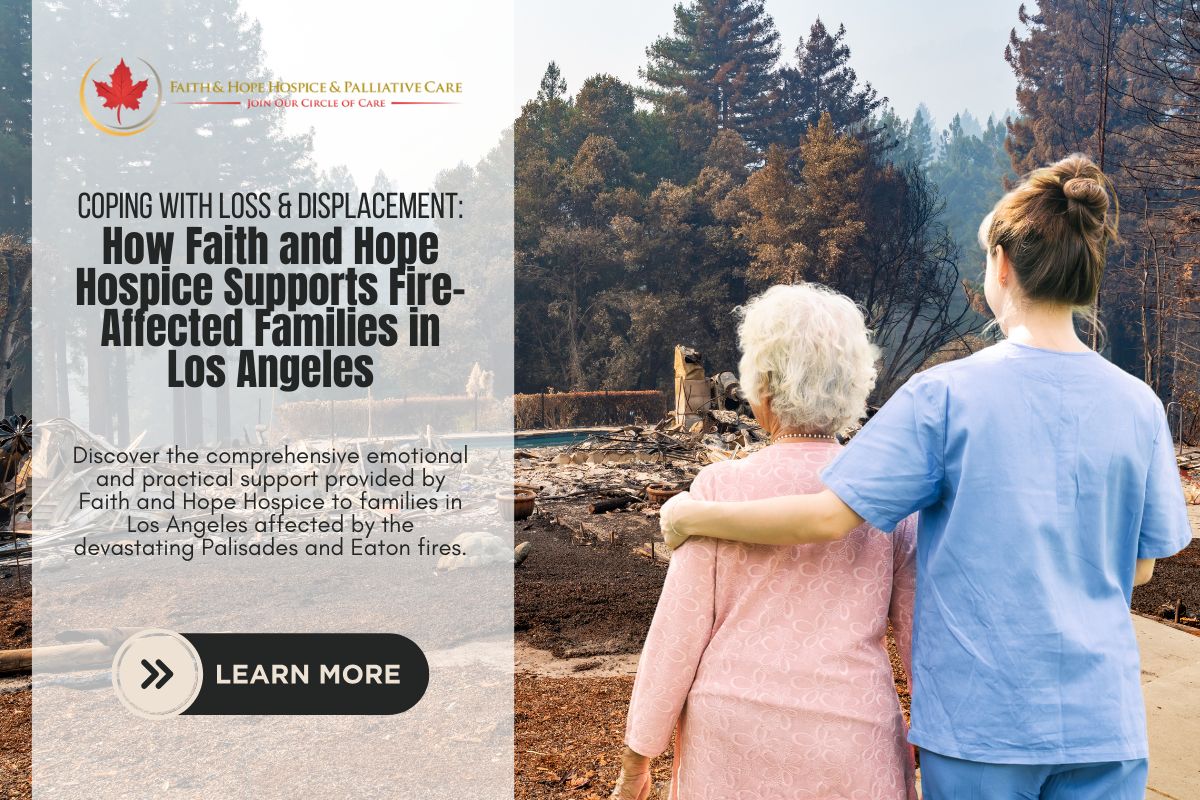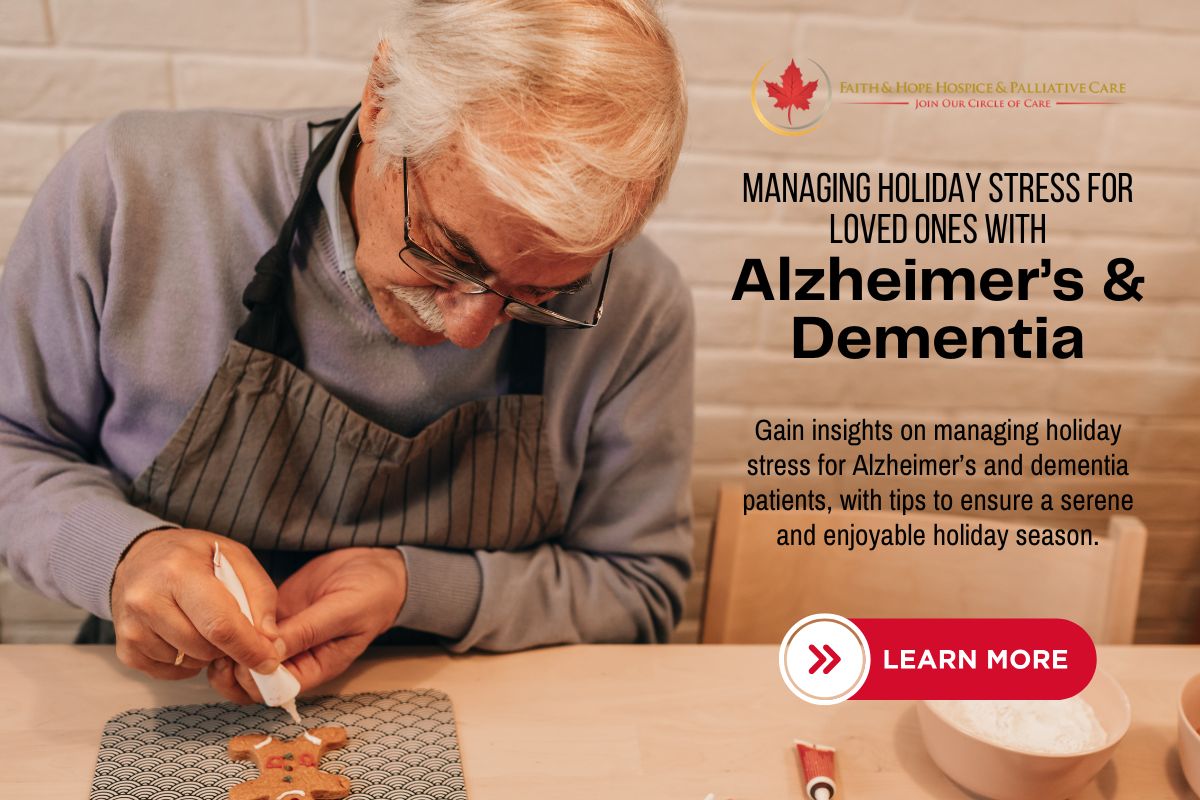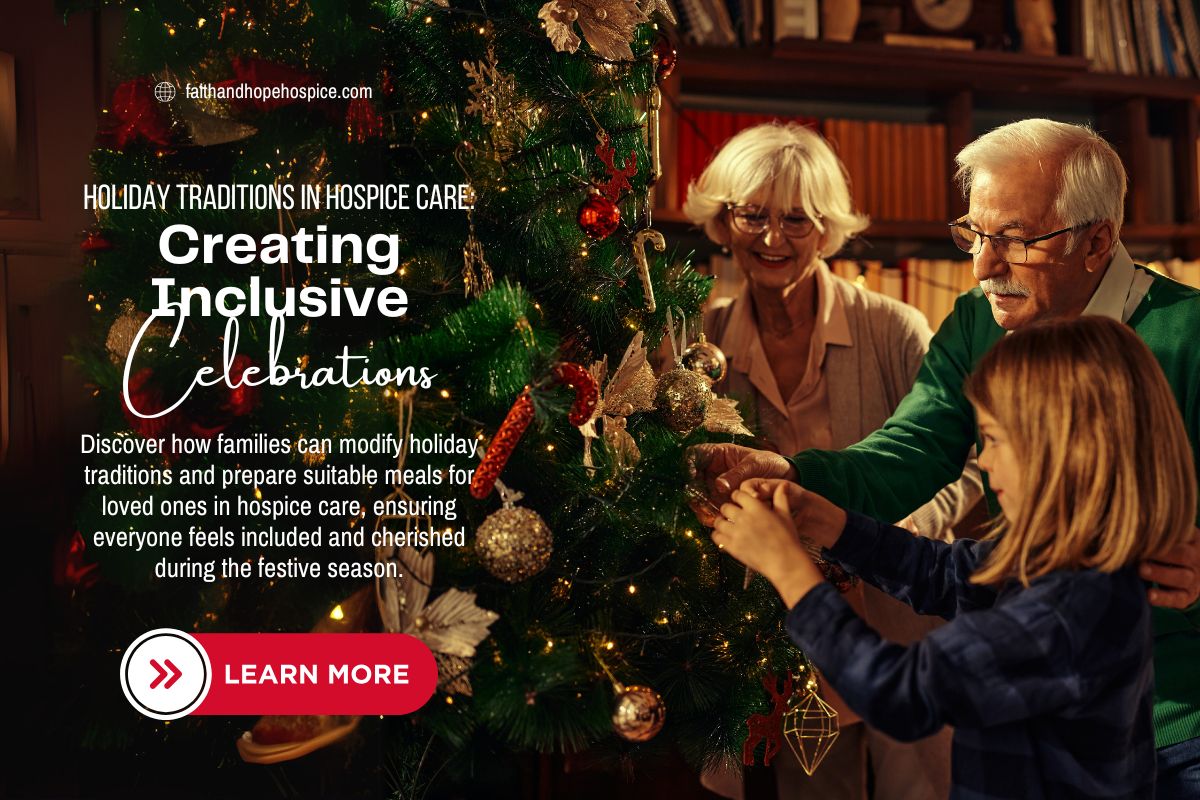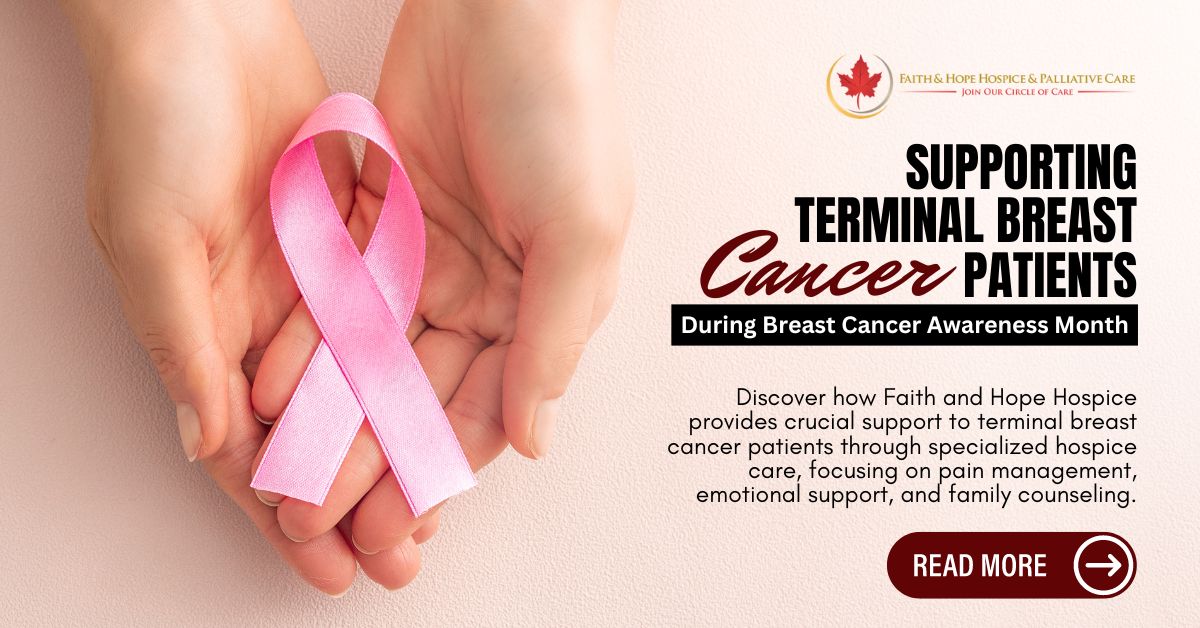- By: administrator
- Blog
- No Comments
Coping with Loss and Displacement: How Faith and Hope Hospice Supports Fire-Affected Families in Los Angeles
As wildfires, like the Palisades and Eaton, continue to impact communities across Los Angeles County, the challenges for families escalate, especially for those dealing with the complexities of hospice care. Faith and Hope Hospice stands at the forefront, offering robust support systems to help these families navigate through the turmoil of loss and displacement. This
- By: administrator
- Blog
- No Comments
Managing Holiday Stress for Loved Ones with Alzheimer’s and Dementia
The festive season, while a time for family gatherings and joyous celebrations, can be particularly challenging for individuals with Alzheimer’s disease and dementia. In Pasadena and Los Angeles, where family traditions run deep, it’s essential to adapt these traditions to accommodate the needs of loved ones affected by cognitive impairments. This blog offers a comprehensive
- By: administrator
- Blog
- No Comments
Holiday Traditions in Hospice Care: Creating Inclusive Celebrations
The holidays are a time of joy and togetherness, but they can also bring unique challenges for families with a loved one in hospice care. In Los Angeles, where diverse traditions paint the season with vibrant colors and flavors, adapting these customs to include everyone is essential. Faith and Hope Hospice is dedicated to helping
- By: administrator
- Blog
- No Comments
Thanksgiving Reflections: Gratitude and Grieving in Hospice Care
Thanksgiving is traditionally a time for joy and gratitude, but it can bring mixed emotions for families with a loved one in hospice care. In the diverse communities of Los Angeles, Beverly Hills, and Hollywood, Faith and Hope Hospice provides compassionate guidance on how to balance grief with gratitude, helping families find moments of peace
- By: administrator
- Blog
- No Comments
How to Talk to Children About Hospice Care
When a family member enters hospice care, discussing it with children can be profoundly challenging. Faith and Hope Hospice in Pasadena and Los Angeles provides thoughtful guidance on how to deal with this delicate conversation. This blog explores effective ways to communicate about hospice care with children, helping them understand and process what it means
- By: administrator
- Blog
- No Comments
Supporting Terminal Breast Cancer Patients During Breast Cancer Awareness Month
October is Breast Cancer Awareness Month, a time dedicated to increasing awareness of breast cancer issues and promoting the support available for those affected. In Los Angeles, Faith and Hope Hospice plays a vital role in providing compassionate care for terminal breast cancer patients. This blog explores how our hospice services offer comfort, support, and
- By: administrator
- Blog
- No Comments
Celebrating World Hospice and Palliative Care Day
World Hospice and Palliative Care Day, observed on the second Saturday of October, is a day dedicated to raising awareness about the critical role of hospice and palliative care in improving the quality of life for patients facing life-limiting illnesses. In Pasadena, Glendale, and Los Angeles, Faith and Hope Hospice is at the forefront of
- By: administrator
- Blog
- No Comments
Managing Pain in Hospice Care: Effective Techniques and Therapies
Pain Awareness Month serves as an important reminder of the challenges faced by individuals experiencing pain, particularly those in hospice care. In Burbank and Glendale, Faith and Hope Hospice is committed to alleviating pain and improving the quality of life for our patients through a blend of pharmacological and non-pharmacological approaches. This blog delves into
- By: administrator
- Blog
- No Comments
Enhancing Alzheimer’s Care in Hospice Settings During World Alzheimer’s Month
World Alzheimer’s Month in September brings a critical focus on the challenges and needs of Alzheimer’s patients, particularly those in hospice care. In Los Angeles, where the demand for specialized dementia care is growing, Faith and Hope Hospice is at the forefront of offering compassionate and tailored interventions that significantly enhance the quality of life
- By: administrator
- Blog
- No Comments
Understanding Grief in Hospice Care: Supporting Families Through Loss
Grief Awareness Day, observed on August 30th, provides an opportunity to address the often misunderstood and overlooked process of grieving, especially within the context of hospice care. In the communities of Hollywood and Beverly Hills, where the impact of loss can feel magnified, Faith and Hope Hospice is dedicated to supporting families through these challenging










